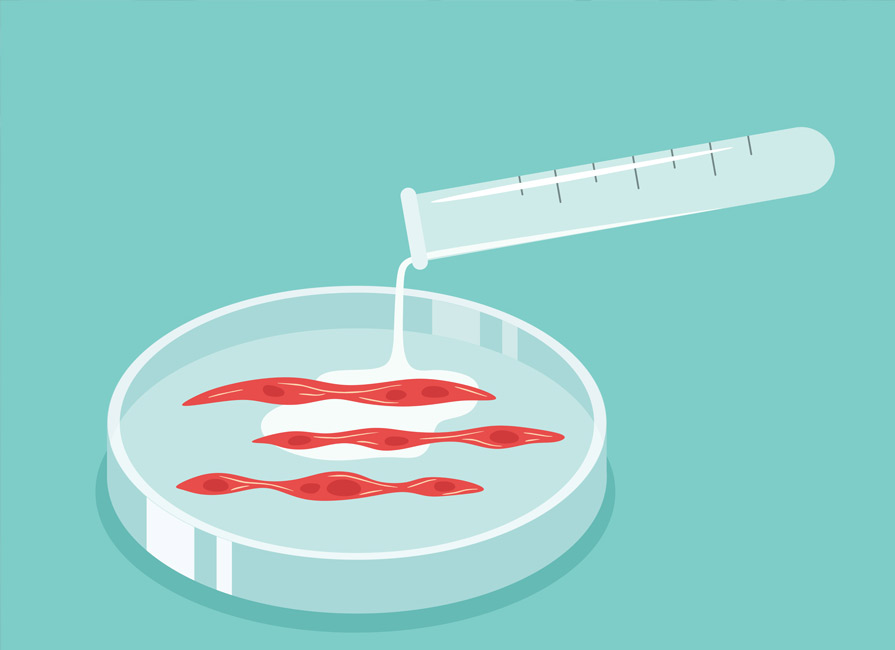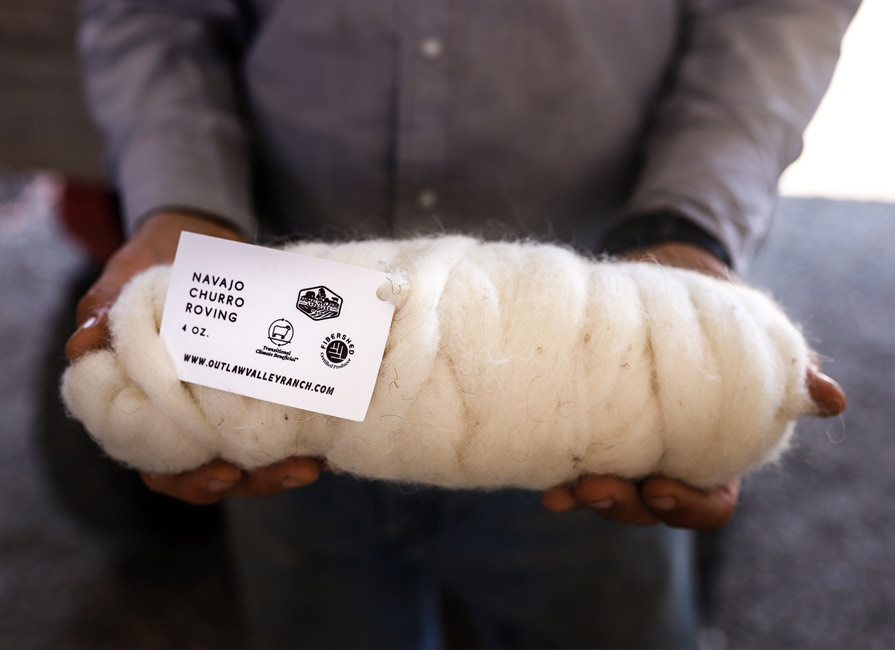Market research shows that today’s consumers are increasingly interested in knowing where their food comes…

From Lab To Label
Public concern about eating and producing meat has increased considerably over recent years. Driven by a growing interest in the links between our dietary choices, public health, and climate change, the all-too-frequent and ill-informed media headlines and campaigning efforts by interest groups to demonize all meat—regardless of how it’s produced—have landed all of ‘animal agriculture’ in the hot seat.
Follow the money
In response, opportunistic global agribusinesses are scrambling to produce palatable alternatives to fresh meat to exploit this new market opportunity, generating vast profit margins by adding value through the ultra-processing of cheap commodity crop materials, such as protein extracts, starches and oils.
But alongside the explosion of ultra-processed plant-based products, heavily funded biotech start-ups across the world are now racing to mass produce laboratory-grown imitations of beef, chicken, pork—and even shrimp and fish—as more ‘sustainable’ or ‘humane’ alternatives. Proponents claim the biomanufacturing of these meat alternatives will make the care, slaughter and processing of farmed animals a thing of the past—and with them, the environmental harms associated with industrial livestock production. But are these promises based in science or fiction?
Lab-grown ‘meat’
Despite the massive media hype, significant uncertainties remain in the scientific community about whether it is possible to safely produce lab-grown ‘meat’ at any scale due to biosecurity and contamination risks, as well as the accuracy of claimed environmental benefits. And at this stage, no one knows if it can even be produced economically. At an estimated $10,000 per pound, it is currently far beyond most budgets, although some market analysts claim the price will come down to $2.50 per pound over the next decade.
Labeling concerns
As an organization dedicated to positive change and grounded in science, A Greener World has been at the forefront of efforts to demand transparency in this new technology. However, powerful corporations and investors behind the lab-grown ‘meat’ industry (and anti-meat rhetoric in general) are concerned about the public response. As a result, there is a genuine risk that lab-grown animal protein products could be sold in supermarkets and restaurants without anyone even knowing what they really are.
In September 2021, the United States Department of Agriculture (USDA) announced a public consultation to inform future regulatory requirements for the labeling of cultured meat and poultry substitutes. The USDA posed 14 questions, covering topics from whether these products should be differentiated at all, whether they should be called ‘meat,’ and what information consumers might want to know, if any.
Through our public comments to the consultation —and subsequent public advocacy and education work—we have presented concrete, actionable steps necessary to ensure the public is fully informed about their food choices and that meat products from farmers who are practicing genuinely high-welfare, sustainable stewardship and responsible management are adequately protected. Our full comments are available online, but our key positions include:
- Honest terminology: To ensure fair and transparent markets for farmers and clarity for consumers, any product that did not originate from a live animal, born from another live animal and raised on a farm should not be labeled as ‘meat’ or ‘poultry’ (or their equivalent), and should be clearly identified as produced using animal cell culture technology. To ensure lab-grown products are differentiated from traditional meat and poultry products, the terms “cell-cultured protein” should be the generic product name.
- Accessible labeling: Labeling should clearly and unequivocally communicate the product is derived from animal cell-cultured technology in text the same size and visibility as the product name on the actual package—not hidden on a website link. Likewise, QR codes should not be permitted for use in conveying additional information about source material, as this limits information access and risks misleading consumers. Do only people with smartphones and extra time at the grocery store deserve to know what is actually in their food?
- Full source material disclosure: From both transparency and food safety/allergenicity perspective, the product should clearly specify any and all species of animal cells it derives from, as well as all ingredients and materials used in the manufacturing process.
- Steak, patty or filet?: If the form/shape of a similar meat or poultry product term is used, it should be in quotation marks to denote a clear difference from the genuine analog. For example: ‘Cell-cultured protein “Steak” derived from beef cells’, and ‘Cell-cultured protein “Burgers” derived from turkey cells’.
- No animal-raising claims: Because no animals were raised, bred, handled, fed, or cared for in any way, claims like ‘humane’, ‘organic’, ‘natural’ and ‘sustainable’—or breed claims like ‘wagyu’—should not be permitted for lab-grown meat products, as there can be no truthful statement made about animal production.
- No ‘greenwashing’: Any sustainability claims must be backed up by independent science and data. (We take this seriously—see p. 4 for more on our recent challenge to ‘greenwashing’ claims from an oat-milk manufacturer). We know that many consumers are increasingly seeking food that has been verified to deliver positive benefits to the environment, animals and rural communities (like food from AGW-certified farms and ranches). Yet no such benefits have been scientifically demonstrated for cell-cultured protein derived from animal cells.
A call to action
A Greener World will continue to support our farmers and ranchers by demanding labeling and food policies that deliver verified, positive benefits to animals, people, and the planet—not merely promises. And through our family of certifications, our logos will continue to provide consumers with a clear guarantee that they are buying food that does exactly that.
It is crucial that meat from high-welfare, sustainable farms has a fair chance in a market increasingly threatened by misleading and unproven marketing claims—something we’re witnessing in real time in the lab ‘meat’ hype. All of us in the food and farming community have a responsibility to help raise consumer awareness about the development of cultured meat substitutes and to ensure this technology (and industry as a whole) gets the deliberate consideration and scrutiny
it deserves before landing on our dinner plates. As we know all too well, it’s a lot harder to put the genie back into the bottle.
WHAT IS LAB-GROWN MEAT?
Lab-grown meat (also known as ‘synthetic’ or ‘cultured’ meat) is where animal muscle tissue is artificially created in laboratory-like conditions from animal stem cells bathed in nutrients and growth factors. Grown in bio-secure incubators, the cells multiply in such a way that ‘muscle’ is formed. Various techniques are under development.
For AGW’s full 3,600-word response to the USDA on the labeling of cultured meat and poultry products, see agreenerworld.org/a-greener-world/comment-fsis-2020-0036.
Author: Emily Moose is Executive Director at AGW
Originally published in the Summer 2022 issue of AGW’s Sustainable Farming magazine.



